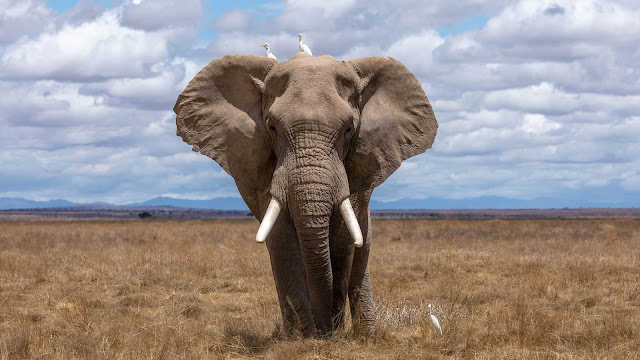Keeping Elephant off the Menu
KF- Writer & Editor
Back in February, in a move that went astonishingly unnoticed by the international community, the South African government proposed an amendment to the Meat Safety Act which would see the current list of 35 species of domestic and wild species acceptable for commercial slaughter expand to include over 90 species. These would cover some critically endangered species such “rhinos, hippos, giraffes and elephants” and also (the puzzlingly vague statement) “all other species of animals not mentioned above, including birds, fish and reptiles that may be slaughtered as food for human and animal consumption”. This would allow those critically endangered species to be slaughtered and sold for commercial consumption in the same way that cattle can be raised for food.
Putting critically endangered species on the menu is at first glance indefensible from all angles. We don’t eat elephants. There is however one small argument for the new regulation which the government have put forward, and that is that expanding this legislation to cover species such as lions and rhinos will help to regulate and thereby enforce hygiene standards of the illegal bushmeat trade. Bushmeat is defined as the meat of hunted wild animals, its consumption is particularly significant in indigenous communities and the market has always operated regardless of its legal status. In some rural areas there is no other choice than to survive on bushmeat hunted from the land or poached from wildlife reserves. The problem can be examined in more familiar Western terms: It is true that by legalising and regulating pizza shops and not kebab shops that standards will be higher, and the end product will likely be safer in the pizza shops. Now, if the kebab shops that were operating illegally were to be regulated as the pizza shops were, it would be simple enough to stick to those regulations (improved hygiene and safety of your current practices) and to now begin operating a legitimate kebab enterprise. That equation seems to make sense, I will admit that much. However, a whole new swathe of clientele will now be interested in kebabs who would never have considered one while it was illegal. This problem will have massive repercussions in the wildlife industry if the regulation allows for the commercial slaughter for consumption of critically endangered species and will undoubtedly result in a surge of demand for these products. Illegal poaching operations are already largely backed by wealthy foreigners with a taste for exotic meats and currently their only barrier to a greater supply is the law.
The South African government seems to have been making moves towards this decision for a long time because it seems they have already considered the problem of supply and demand. In 2019 the government amended the Animal Improvement Act (AIA) to reclassify 33 wild species including “lions, cheetahs, rhinos and zebras” to fall under its governance. The AIA (first created in 1998) governs the breeding of livestock and through its own description exists to “provide for the breeding, identification and utilisation of genetically superior animals in order to improve the production and performance of animals in the interest of the Republic; and to provide for matters connected therewith.” Essentially, they changed the categorisation of these 33 ‘wild’ species to ‘livestock’, meaning they could be bred for improvement in the same way wild bovine species have been bred into the domesticated cattle we know today.
These two legislative changes line up to pave the way for a fully regulated farming and commercial consumption industry for wild animals such as elephants and lions. This seems like a far cry from the decades of conservation work that have been steadily and painstakingly attempting to increase these animals’ numbers within the safety of protected areas. Wildlife crime exists as a sophisticated network routed in organised crime. The people who truly profit from it are worlds away from the front lines where local communities are losing out from the loss of wildlife tourism.
Introducing regulations that encourage the consumption of wild and critically endangered species opens the floodgates of demand and disease. We simply do not know what the repercussions will be for the populations of critically endangered species now facing a whole new threat. The excuse of adding protective regulation to an existing illegal industry is a thin veil for promoting a dangerous, poorly policed but potentially lucrative industry for a select few. A flood of unhygienically handled meat containing unknown diseases will hit the markets and will impact the poorest communities without the means to buy higher quality meat, exposing them to a cocktail of zoonotic diseases. The rich (and likely foreign) investors who bankroll the breeding farms and poaching operations will continue to profit as they risk the lives of local communities who face a choice between potentially diseased meats and food insecurity.
Who knows how many eco tourists who visit Africa each year to marvel at its magnificent wildlife would be tempted once they saw elephant on the menu?
References
https://theconversation.com/south-african-proposal-to-breed-wildlife-for-slaughter-courts-disaster-140399
https://www.traffic.org/publications/reports/consumer-demand-for-rhino-elephant-and-pangolin-products-in-vietnam/
https://www.iol.co.za/saturday-star/news/govt-proposal-to-add-rhino-elephants-to-list-of-animals-that-can-be-slaughtered-for-consumption-50011976
https://theconversation.com/banning-bushmeat-could-make-it-harder-to-stop-future-pandemics-138735
https://www.dailymaverick.co.za/article/2019-10-16-sa-reclassifies-33-wild-species-as-farm-animals/#gsc.tab=0
https://www.gov.za/sites/default/files/gcis_document/201409/a62-98.pdf
https://www.gov.za/sites/default/files/gcis_document/201905/42464gon664.pdf
https://unsplash.com/photos/QJbyG6O0ick
https://unsplash.com/photos/UxHol6SwLyM





Comments
Post a Comment